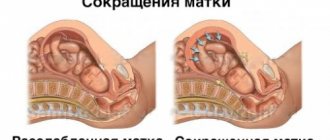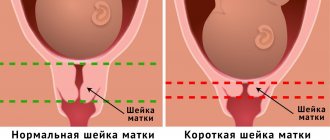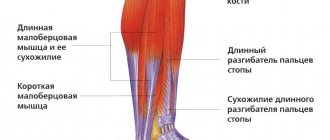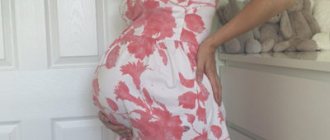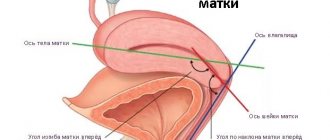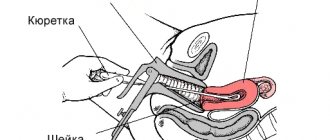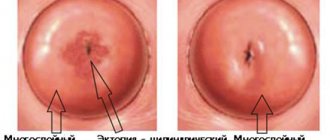After conception has occurred and pregnancy has occurred, the expectant mother has a large number of questions that, unfortunately, they do not always ask specialists. After the girl goes to see a gynecologist, the specialist will draw up a schedule of routine examinations, including ultrasound screening.
Based on the diagnostic results, it may be written in conclusion that the placenta is located along the posterior wall of the uterus. Not every woman will pay attention to this, since many do not even know where it should be normally. Accordingly, it is not possible to understand whether this is considered a pathology.
Normal location of the placenta
From a physiological point of view, the most optimal is the attachment of the placenta along the posterior wall. The fact is that during pregnancy the walls of the uterus stretch unevenly. As the child grows, the front wall increases in size and stretches, while the back wall retains its density and stretches much less.
The front wall becomes thinner as it stretches. From here it becomes clear that for the normal functioning of the placenta, a location along the rear wall is more advantageous, since this way it is exposed to a minimum of stress.
Advantages of location on the rear wall
- The placenta is ensured immobility - placenta previa on the posterior wall is extremely rare, the placenta does not descend down and there is no threat to pregnancy.
- Uterine contractions and increased tone will not increase the risk of placental abruption.
- The placenta is less exposed to blows and jolts from the baby when it moves.
- Lower risk of increment.
- There is a lower risk of injury to the placenta due to an accidental blow to the abdomen.
- There is a lower risk of bleeding with a caesarean section.
Features of the condition
It happens that the placenta is located low on the back wall. The doctor understands that its edge lags behind the internal pharynx by less than 6 cm. The reasons for this condition are frequent pregnancies, the presence of abortions, and inflammatory diseases of the endometrium of an infectious nature. A dangerous diagnosis is posterior placenta previa. In this case, the distance between its edge and the internal os is less than 6 cm. Because of this, there is a risk of premature placental abruption. As a result of this condition, heavy bleeding occurs.
Women whose placenta is low-lying should undergo an ultrasound scan at certain dates. Sometimes this is necessary more often than during normal pregnancy. If the diagnosis is confirmed at 36 weeks, hospitalization and surgical delivery are required. However, most cases end favorably.
There are factors that prevent the placenta from attaching to the optimal location:
- Defects in the area of the egg shell.
- The presence of fibroids, inflammatory, purulent phenomena in a woman, the presence of physical deformations of the uterus.
- An unproven factor is the effect of gravity during sleep.
More often, abnormal attachment is observed in women who have given birth.
It is important to remember that the posterior location of the placenta is not something for which all expert recommendations should be avoided. An ultrasound scan once per trimester allows you to determine whether a woman has a problem. If presentation is diagnosed, the doctor carefully plans monitoring of the pregnant woman. As the size of the uterus increases, presentation may go away on its own, but how the placenta behaves cannot be predicted or controlled. It is important that there is no tone in the area where the fetus is attached, as this increases the likelihood of abruption.
In case of pathology, it is necessary to identify the problem in time and constantly see a doctor. Even with full presentation, women have the opportunity to hear the cry of their baby. But to do this, you need to follow the advice of your doctor and check your condition more often using ultrasound. It is impossible to “feel” the placenta on your own - it can only cause harm.
It is possible to save the life of the baby and mother by caesarean section if the presentation continues to persist. In this case, none of the dangers that exist during natural childbirth will be avoided. In most women, the placenta is attached along the posterior wall, and its development occurs normally. But even if a pathological picture is identified, in 90% of cases the diagnosis is removed by the end of pregnancy due to the fact that the uterus is actively growing.
Author: Irina Levchenko, doctor, especially for Mama66.ru
Causes of anterior placenta previa
However, not everything during pregnancy always goes according to the ideal scenario. Often the placenta is attached in a different place - on the side or in front. At the moment, many doctors consider the attachment of the placenta along the anterior wall as a normal option that requires special monitoring.
There can be many reasons why the placenta is attached to the anterior wall of the uterus. The mechanism of such attachment has not been fully studied, but it has been revealed that it can be provoked by:
- changes in the endometrium of the uterus;
- myoma;
- multiple pregnancy;
- Features of the development and implantation of the fertilized egg;
- scars and adhesions on the walls of the uterus.
Various inflammatory diseases of the genital area, endometriosis, can lead to changes in the endometrium.
Scar changes on the walls of the uterus appear as a result of operations on the uterus, abortion, and inflammatory diseases. Hence the conclusion is that multiple abortions and cesarean sections increase the risk of anterior placenta attachment.
According to statistics, such attachment rarely occurs during the first pregnancy. But in multiparous and multiparous women, this is a much more common occurrence, which may be explained by changes in the uterus and especially the inner lining.
If for some reason the fertilized egg does not have time to penetrate the endometrium within a certain time, then it is attached to the anterior wall.
How to find out where the placenta is?
The placenta, located on the anterior wall of the uterus, does not indicate its presence there in any way - in other words, there are no symptoms. However, it is amenable to medical diagnosis. The nuances of the examination depend on whether the presentation is complete or partial. In the first case, the placenta completely covers the uterine os, and this can be determined by the gynecologist during the examination. In the case of partial presentation, it is often impossible to find out exactly what position we are talking about. Ultrasound copes well with this task, and under no circumstances should it be ignored.
Subsequently, an ultrasound examination will allow you to monitor the movement of the placenta, since it tends to move upward. This is important for birth planning.
Possible complications of the anterior attachment of the placenta to the uterus
Is there any danger in this position of the placenta? It is impossible to answer this question unequivocally.
The fact is that if the placenta is located high on the anterior wall, pregnancy can proceed completely normally and end in a natural birth without pathologies.
At the same time, there are some risks. This is due to the fact that the placenta is an organ that is not capable of stretching. And when the wall on which it is attached begins to stretch too actively, complications are possible.
First of all, this is insufficient functioning of the placenta and impaired delivery of nutrients and oxygen to the fetus. And this in turn can lead to gestosis or placental insufficiency.
The growth of the uterus and stretching of its anterior wall can cause the placenta to begin to move downwards.
If the distance to the uterine pharynx is reduced to 4 cm, we will talk about such a complication of the anterior location as placenta previa. Anterior placenta previa can cause dysfunction of the placenta, bleeding, and the threat of miscarriage.
In extremely rare cases (if the position is too low), the placenta can completely block the cervix of the uterus, which will exclude the possibility of natural childbirth. More often, this complication develops during repeated pregnancy.
Anterior placenta previa in combination with placental insufficiency can provoke such a serious complication of pregnancy as partial or complete abruption.
Fetal movements and uterine contractions in later pregnancy increase the chances that the placenta will begin to move away from the uterine wall.
This can lead to internal and external bleeding, oxygen starvation of the fetus and even its death. Therefore, at the first signs of bleeding, you should consult a doctor immediately.
Placing the baby's seat on the front wall may result in too strong an attachment and placenta accreta.
The possibility of this complication increases sharply if there have been abortions, curettages, inflammatory processes, or births by cesarean section in the past.
General information
The placenta is a temporary organ. Its formation occurs where chorionin is introduced into the uterine lining. The baby's place develops during the first 16 weeks of intrauterine development of the fetus, and only after that it begins to perform its main tasks (respiratory, nutritional, protective, endocrine).
Depending on where the placenta is attached, it is determined how well and correctly the pregnancy will proceed. In most cases, the place is located along the back wall of the uterus, closer to the bottom of the reproductive organ. This localization is the most favorable for the child.
Posterior and anterior location of the placenta. Source: zsz.pp.ua
However, if there is a pregnancy along the posterior wall of the uterus, then this position of the placenta has a number of advantages:
- The child's seat will have less opportunity to move downwards, it will have a standard, almost fixed position, since this area stretches less;
- If the baby actively moves in the womb, or if the woman accidentally hits her stomach or bends over frequently, there will be no injury to the placenta;
- The likelihood of severe bleeding during delivery by cesarean section is reduced, since the incision passes not along the back, but along the front wall of the uterus;
- When carrying a child, as well as during childbirth, the risk of various complications is minimized;
- A woman can hear fetal movements more clearly;
- When the placenta is fixed along the back wall, the girl’s belly looks smaller and neater;
- The likelihood of such conditions as placenta previa or placental abruption, bleeding or miscarriage is minimal.
When the placenta is located on the back wall of the uterus, the gynecologist has the opportunity to better observe the fetus in the womb. This feature allows you to perform ultrasound diagnostics more efficiently, listen to the heartbeat and determine the position of the child. If a woman falls on her stomach or is hit in this area, the amniotic fluid will soften the force.
Signs of localization along the anterior wall
The location of the placenta itself does not have any subjective signs that affect the woman’s well-being. A woman may not even be aware of this arrangement until she undergoes examinations and has an ultrasound scan.
In some cases, indirect symptoms are:
- weakly felt fetal movements;
- difficulty listening to the fetal heartbeat - sometimes the heart sound is completely inaudible in the absence of pathology of the fetal cardiovascular system;
- Large belly size.
Unpleasant symptoms may appear if the placenta begins to descend and becomes previa. In this case, a woman needs to pay attention to:
- heaviness and pain in the lower abdomen;
- spotting brown vaginal discharge;
- bleeding of varying degrees.
How is the location of the placenta determined?
The location of the baby's place is determined during a routine ultrasound. In the absence of any pregnancy pathologies, characteristic symptoms are not observed, and the woman’s well-being does not suffer.
There are some things to consider during pregnancy:
- Fetal movement is felt weaker, sometimes later than expected;
- When listening to the baby's heartbeat, the sound will be duller and more distant;
- The size of the abdomen is slightly increased;
- Squeezing the abdomen and any injuries to it create a greater danger than when the placenta is located behind.
If there is an anterior presentation, it is determined by the doctor during a gynecological examination.
The anterior position of the child's seat is not a pathological deviation; many doctors consider the situation to be completely normal. If a woman does not have gynecological diseases (fibroids, cysts on the uterus) and cicatricial changes in the myometrium, then pregnancy proceeds without pathology and ends in term birth. Since the situation is accompanied by certain risks, the woman needs careful medical supervision.
Features of pregnancy
The anterior position itself does not cause any trouble to the woman and does not worsen her well-being. Being simply a feature of pregnancy, it does not require treatment. In addition, there is no treatment for it, since it is impossible to influence the location of the placenta, as well as change its position and move it to the back wall.
However, this feature of pregnancy requires constant and close monitoring so as not to miss the possible onset of complications, which are still more likely with an anterior location than with a normal one.
To reduce the risk, pregnant women with this placement are advised to rest more, completely avoid lifting weights (even if it seems that the objects are not heavy at all), and avoid worries, stress, and physical exertion.
If the tone of the uterus is increased, then you should try to touch the stomach as little as possible so as not to provoke increased tone and placental abruption.
This is especially important in the later stages.
It is important to visit the doctor on time so as not to miss changes in the placenta and its location. This approach will allow you to notice in time that the child’s seat tends to move downwards.
Influence
Pregnancy is a natural, natural state for a woman. Physiologically, the body is designed in such a way that it will create all the necessary conditions in order to protect the fetus from the negative effects of adverse factors. When the placenta is located on the back wall of the uterus, the most comfortable conditions are created for the development of the fetus.
Height of the placenta. Source: zdorov1467.ru
It is in this zone that the highest quality system of circulatory branches is noted. Thanks to this, the child will receive the necessary amount of nutrients and oxygen, and accordingly, he will grow better. Also, with such a localization of the child's seat, the child is better protected from injury.
Pregnancy in which the placenta is located along the posterior wall of the uterus proceeds better and in rare cases is accompanied by complications. When the organ contracts, the baby's place remains at its previous size, so the risk of detachment is minimal.
What does it mean?
Placental tissue is formed quite early during pregnancy. Already in the second trimester of pregnancy, it begins to function fully. The placenta contains various blood vessels through which the fetus receives the nutrients necessary for its growth and development, as well as dissolved oxygen.
How the placenta is attached to the uterine wall determines how the baby’s intrauterine development will proceed, as well as the course of pregnancy as a whole.
What to do if the placenta is located on the anterior wall
If the baby's place is located not closer to the bottom of the uterus, but along the front part, the expectant mother should know that this fact means a feature of the body, and not a disease. Pathology is lower placentation. Therefore, there is no need to worry or panic. Medical supervision, careful attention to health and adherence to the regime will make pregnancy a pleasant and exciting period of life. If anterior presentation is not associated with complications, then the mother’s well-being does not suffer.
The task of doctors in this situation is to monitor the condition of the placenta and check the blood for clotting and hemoglobin levels.
The mother’s task: to take care of herself and the child, to notify the doctor at the slightest abnormal signs. If the slightest spotting appears, there is no need to wait for a scheduled appointment.
In cases of increased uterine tone, and the woman will feel this by the fact that the abdomen will be very hard, frequent touching of it is undesirable.
